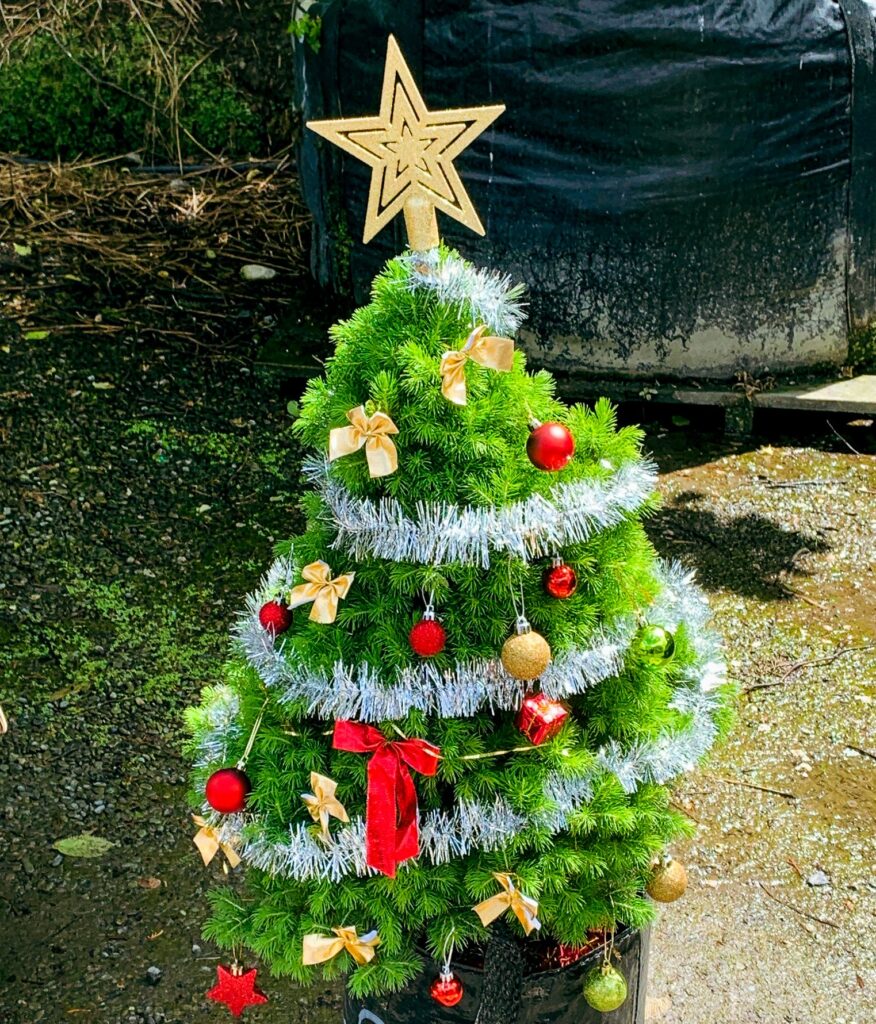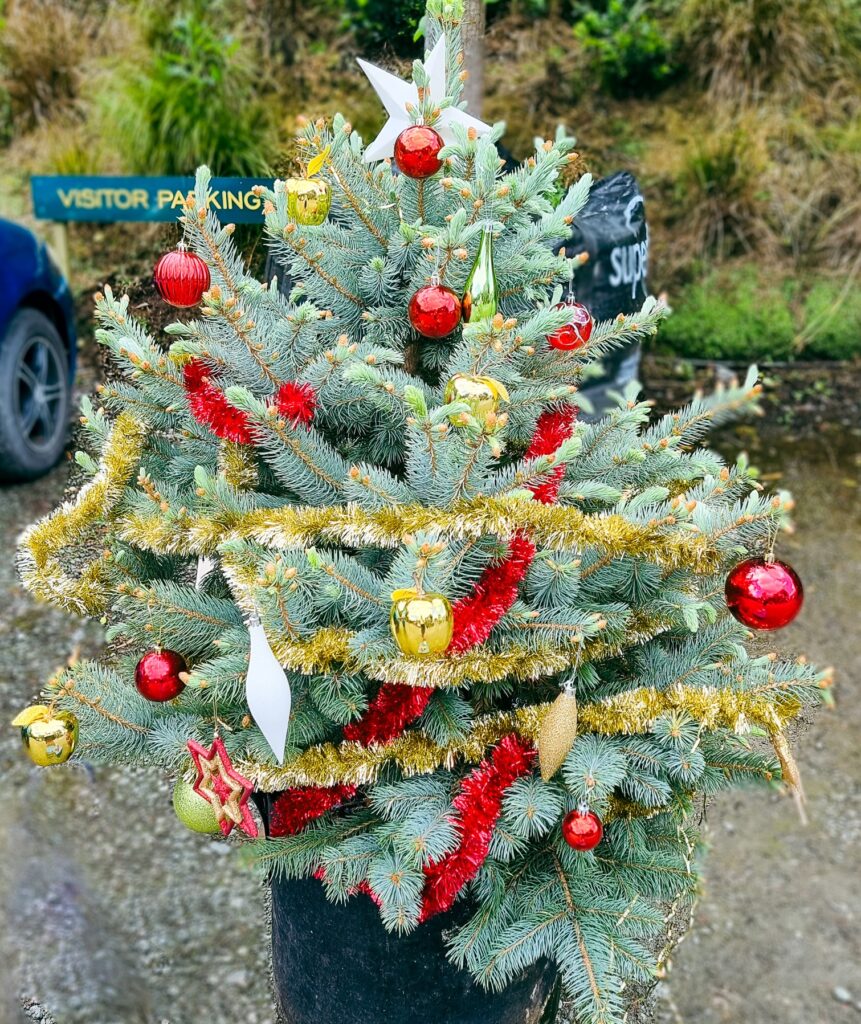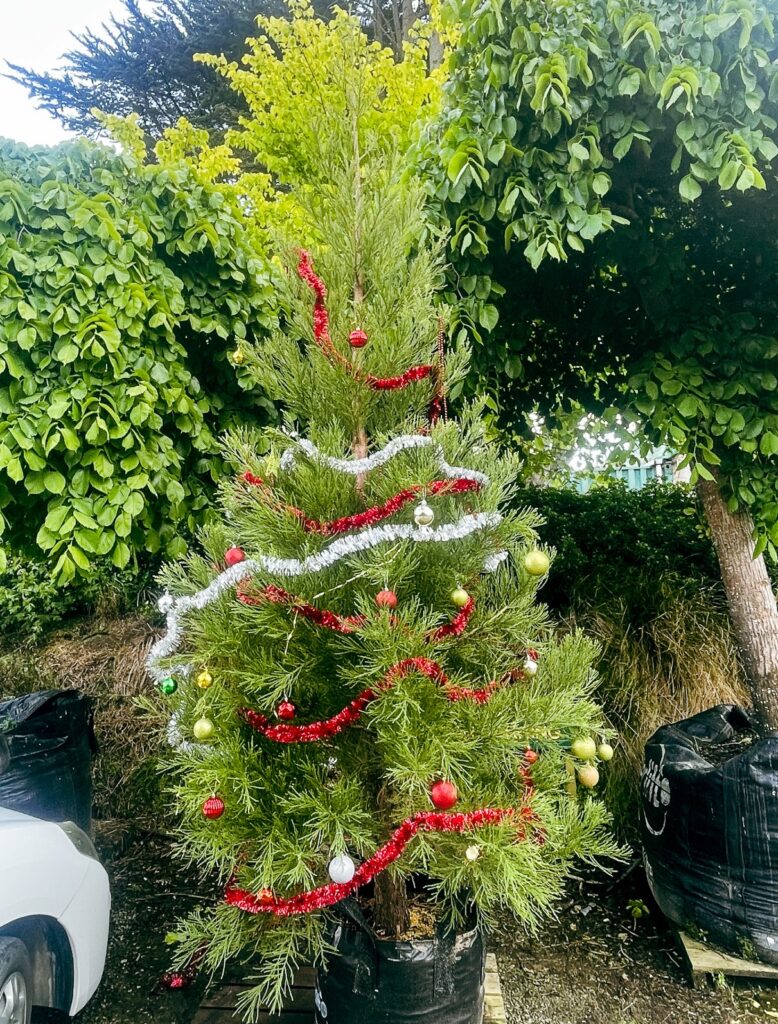Our Christmas Trees
The Christmas Tree doesn’t actually exist. It’s true. It never has existed and probably never will. Before you start shaking your head and muttering a ‘bar humbug’ under your breath, we should explain. Because the absence of the Christmas Tree is a good thing. As while there is no single botanical Christmas Tree, despite Santaclawus being a great not-quite-latin name we should definitely use, we have lots of trees we refer to as Christmas Trees, especially evergreens.

The tradition of using evergreens as Christmas Trees started in Germany, some time during the 16th Century, when families would build Christmas pyramids of wood and decorate them with evergreens and candles if wood was scarce.
Tastes have certainly changed and the most popular Christmas Trees today include some of the below examples. But be careful – one of them can get rather large and is best suited to outdoor use.
PICEA pungens ‘Baby Blue’ – Dwarf Blue Colorado Spruce
A dash of visual trickery makes this an excellent Christmas tree option. The striking silvery-blue needles appear as if almost frosted by a gentle Christmas snow.
It gives the tree a classical Christmassy feel that evokes memories of carol singers, hot chocolate and tales of the frosty the snowman.
A dense and smaller-growing spruce, it is predictably suited to colder climates, where this evergreen will eventually reach 3 metres.
PICEA glauca var. albertiana ‘Conica’ Tree

The closely packed mid-green needles and natural conical form make for a tree that begs to be decorated with more tinsel and ball-balls than is necessary.
Yes, this small spruce is just asking to hold 5 times its own weight in candy cane (approximately enough to last 2 children about 3 days).
It will also look splendid undercoated, in a pot outside, adding year-round colour and requiring little maintenance.

SEQUOIADENDRON giganteum – Giant Wellingtonia Redwood
The oldest version of this Redwood giant is thought to be up to 2,700 years old. But just trying to place the Christmas star on the very top. You’d need a helicopter.
The leaves are needle like, scaly and sharp, whilst that trunk is the very definition of reddish brown. This is a noble tree that gently demands your respect.
And your gaze, as you take in its beautiful appearance.
Late Spring Flowering Paul’s Scarlet
Lush Leaved Japanese Maples
Marcia’s Tree of the Month: PRUNUS Kanzan – Pink Flowering Cherry
Archives
- November 2024
- October 2024
- September 2024
- August 2024
- July 2024
- June 2024
- May 2024
- April 2024
- March 2024
- February 2024
- January 2024
- December 2023
- November 2023
- October 2023
- September 2023
- August 2023
- July 2023
- June 2023
- May 2023
- April 2023
- March 2023
- February 2023
- January 2023
- December 2022
- November 2022
- October 2022
- September 2022
- August 2022
- July 2022
- June 2022
- May 2022
- April 2022
- March 2022
- February 2022
- January 2022
- December 2021
- November 2021
- October 2021
- September 2021
- August 2021
- July 2021
- April 2021
- March 2021
- February 2021
- January 2021





